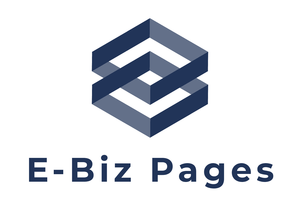Dominate Local Search: Contractor SEO Success
Introduction to Local SEO for Contractors
Defining Local SEO: Enhancing Online Visibility for Contractors
In this digital era, where local searches have become the norm, contractors need to harness the power of Local SEO (Search Engine Optimization) to ensure their businesses thrive. Local SEO refers to the process of optimizing a contractor’s online presence and website so that it appears prominently in local search results. It aims to connect potential customers with contractors who are geographically close to them.
Local SEO involves various strategies and techniques tailored specifically for contractors, including optimizing their business profiles on platforms such as Google My Business (GMB), managing online reviews, ensuring NAP consistency (Name, Address, Phone number), and fine-tuning on-page optimization with relevant keywords. By implementing these practices, contractors can increase their visibility on search engines and attract more targeted local traffic.
The Importance of Local SEO for Contractors
The significance of local SEO cannot be overstated in today’s competitive digital landscape. A well-executed local SEO strategy can provide numerous benefits for contractors. First and foremost, it helps them gain higher visibility in search engine result pages (SERPs) when potential customers are seeking services within their locality.
This increased visibility translates into a steady flow of relevant traffic to their websites or business profiles. Moreover, local SEO allows contractors to target specific geographic areas where they operate or wish to expand their business.
By optimizing their online presence locally, contractors can reach potential customers who are more likely to convert into real leads and generate revenue. This targeted approach eliminates unnecessary competition from non-relevant locations, enabling contractors to focus on building a strong customer base within their immediate surroundings.

An Overview of Benefits and Challenges in Local SEO
Contractors who invest in effective local SEO services enjoy several advantages that contribute directly to business growth. One key benefit is enhanced brand credibility. By appearing prominently in local search results, contractors demonstrate their reliability and expertise, gaining trust from potential customers who tend to prefer local services over larger corporations.
Furthermore, local SEO serves as a cost-effective marketing strategy for contractors. Traditional marketing channels can be expensive and difficult to measure in terms of success.
Local SEO, on the other hand, allows contractors to accurately track their return on investment (ROI) by analyzing website traffic, online leads generated, and conversion rates. However, like any digital marketing endeavor, there are challenges associated with local SEO for contractors.
Search engine algorithms constantly evolve to provide users with the most relevant and high-quality results. Keeping up with these changes requires continuous monitoring and adapting strategies accordingly.
Additionally, strong competition among contractors vying for top positions in local search results can make it more challenging to achieve and maintain a prominent online presence. In the following sections of this article, we will delve deeper into the specific strategies that empower contractors in achieving optimal local SEO performance: optimizing their Google My Business profile, ensuring NAP consistency across various platforms and directories, managing online reviews effectively, as well as executing on-page optimization techniques tailored for contractor-specific keywords.
Understanding the Basics of Local SEO
Difference between Organic and Local Search Results
Decoding the Digital Landscape When it comes to search engine results pages (SERPs), it is essential to understand the distinction between organic and local results. Organic search results are generated by search engine algorithms, based on relevance and quality of content, making them highly valuable for website owners who aim to improve their visibility across broader searches.
On the other hand, local search results are specifically tailored to provide users with more location-specific information. These localized listings are primarily influenced by factors such as proximity, relevance, and prominence.
While organic rankings focus on a broader audience reach, local SEO targets potential customers within a specific geographic area. By optimizing for local search results, contractors can effectively target their desired region and increase visibility among potential clients seeking their services in that particular locality.
Key Components of Local Search Ranking Factors
Unveiling the Algorithmic Secrets Achieving optimal rankings in local search results requires an understanding of the key components that influence these rankings. Several factors contribute to a website’s performance in local searches:
- Google My Business (GMB) Optimization: A crucial element in local SEO strategy is optimizing Google My Business listing. Accurate business information, such as name, address, phone number (NAP), relevant categories, working hours, photos/videos showcasing workmanship increases credibility and helps Google promote your business locally.
- NAP Consistency (Name, Address, Phone Number): Consistency in NAP information across different online platforms is critical for better ranking performance. Ensuring that your contact details are identical on your website and other directories enhances trustworthiness both for users and search engines.
- Online Reviews and Reputation Management: Online reviews significantly impact consumers’ decision-making process while also influencing local search rankings. Encouraging customers to leave positive reviews, promptly responding to feedback (both positive and negative), and actively managing your online reputation are essential strategies in local SEO.
- On-Page Optimization for Local Keywords: Incorporating location-specific keywords throughout your website’s content, meta tags, headers, and title tags enhances visibility in local searches. Targeting long-tail keywords that include the contractor’s service area can help attract more localized traffic.
By focusing on these key components of local search ranking factors, contractors can improve their visibility in local searches and attract more relevant traffic to their websites. Remember that implementing a comprehensive strategy encompassing GMB optimization, NAP consistency, reputation management, and on-page optimization is crucial for achieving success in the competitive world of local SEO.
Optimizing Google My Business (GMB) Listing
Creating a GMB profile for contractors
When it comes to local SEO for contractors, optimizing your Google My Business (GMB) listing is crucial. This platform allows you to showcase your business on Google Maps and in local search results, increasing your visibility to potential clients. To create an effective GMB profile, start by providing accurate and up-to-date business information.
This includes your company name, physical address, phone number, and website URL. Ensuring that this information is consistent across all online platforms is essential for establishing trust with both search engines and potential customers.
Accurate business information and category selection
As you create your GMB profile, be meticulous about entering accurate information. The accuracy of your business details plays a significant role in local search rankings.
Make sure to choose the correct category that best represents your contracting services. Selecting the appropriate category allows search engines to understand the nature of your business and display it to relevant users in their search results.
High-quality images and videos showcasing workmanship
Visual content can significantly enhance the appeal of your GMB listing. Include high-quality images that highlight completed projects or showcase your team’s workmanship. Potential customers browsing through local search results will be more inclined to choose a contractor who visually demonstrates their expertise and professionalism through captivating visuals.
Consider uploading before-and-after photos or videos that illustrate the transformations you’ve achieved for previous clients. Engaging visual content not only attracts attention but also builds trust with potential customers who can visualize the quality of work they can expect from your construction company.
Encouraging customer reviews on GMB listing
Positive customer reviews play a vital role in influencing consumer decisions when choosing a contractor. Encourage satisfied clients to leave reviews on your GMB listing, as these reviews are prominently displayed in local search results.
A positive online reputation can significantly impact your local search rankings and attract more potential customers. To encourage customers to leave reviews, follow up with them after a project is completed and ask for their feedback.
Utilizing email marketing or social media platforms is an effective way to reach out to clients and politely request reviews. Responding promptly to both positive and negative reviews demonstrates your commitment to customer satisfaction and fosters trust among prospective clients.
By optimizing your Google My Business listing, you can establish a strong online presence that ensures your contracting business stands out in local search results. Accurate business information, appropriate category selection, appealing visual content, and encouraging customer reviews are all key ingredients in enhancing visibility and attracting potential clients in the competitive realm of contractor services.
NAP Consistency and Citations Building
Importance of consistent NAP information across all online platforms
In the world of local search engine optimization (SEO), consistent and accurate NAP information is crucial for contractors. NAP stands for Name, Address, and Phone number, and it serves as a critical piece of information that search engines use to determine the credibility and legitimacy of a contractor’s online presence.
When your NAP information remains consistent across all platforms, including your website, online directories, social media profiles, and Google Business Profile, it bolsters your chances of ranking higher in local search results. The consistency of your NAP information not only helps potential customers find you easily but also signals to search engine algorithms that you are a trustworthy contractor.
Inaccurate or inconsistent NAP details can confuse both customers and search engines alike, leading to missed opportunities for generating leads and conversions. By ensuring that your business name, address, and phone number are the same everywhere online, you establish trustworthiness with both users and search engines.
Strategies to ensure NAP consistency
To maintain consistent NAP information across various platforms as a contractor requires diligent effort. Here are some strategies to help you achieve that:
1. Registering with online directories relevant to contractors
2. Managing citations on various platforms

Reputation Management for Contractors
The Crucial Role of Online Reviews in Local Search Rankings
In the digital age, online reputation holds immense significance for contractors looking to increase their visibility in local search rankings. Search engines consider reviews as valuable signals of a contractor’s credibility and reliability. Positive reviews not only enhance a company’s online reputation but also boost its chances of appearing prominently in local search results.
Conversely, negative reviews can have detrimental effects on an organization’s image and ultimately impact its business prospects. Therefore, crafting an effective reputation management strategy is crucial for contractors seeking to optimize their local SEO efforts.
Strategies to Encourage Positive Customer Reviews
To cultivate a positive online reputation and encourage customers to leave reviews, contractors must prioritize providing exceptional service and unforgettable customer experiences. By going above and beyond expectations, such as being punctual, maintaining clean work areas, and demonstrating professionalism throughout projects, contractors can create a lasting impression on their clients.
Additionally, implementing follow-up email campaigns that request feedback and reviews can be highly effective. Sending personalized emails expressing gratitude for choosing the contractor’s services while gently encouraging clients to share their experiences through review platforms can significantly increase the likelihood of receiving positive feedback.
Responding Promptly to Both Positive and Negative Reviews
Crafting thoughtful responses demonstrates that the contractor values customer input while also showcasing excellent customer service skills. Responding promptly allows contractors to address any concerns or issues highlighted in negative reviews and provide resolutions if appropriate. This proactive approach not only helps resolve conflicts but also portrays transparency and a commitment to client satisfaction.
By responding publicly to positive reviews as well, contractors demonstrate appreciation for customers’ kind words while boosting their overall online reputation. Engaging with both positive and negative feedback reflects dedication towards continuous improvement within the construction business.
Reputation management plays a vital role in enhancing a contractor’s visibility in local search results. By recognizing the significance of online reviews, contractors can develop effective strategies to encourage positive feedback from satisfied customers.
Providing exceptional service, implementing follow-up email campaigns, and responding promptly to all types of reviews are key components of a successful reputation management approach. By actively managing their online reputation, contractors can strengthen their local SEO strategy and position themselves favorably in search engine algorithms for local searches, ultimately driving more traffic and business to their websites.
On-Page Optimization for Local Keywords Subtopic: Keyword research for contractor-specific local terms The cornerstone of any successful local SEO strategy lies in comprehensive keyword research.
For contractors looking to optimize their websites for local search, it is imperative to identify and target relevant contractor-specific local terms. These keywords allow potential customers to find your business easily when searching for services within your geographical area.
To conduct effective keyword research, start by brainstorming a list of industry-specific terms that reflect the services you offer as a contractor. Consider phrases such as “contractor near me,” “residential construction companies,” or “commercial remodeling in [your city].” It is also beneficial to explore variations of these keywords that include more specific details about your specialization, such as “kitchen remodeling contractor” or “bathroom renovation expert.”
Next, utilize keyword research tools like Google Keyword Planner or SEMrush to analyze search volume and competition for each term. Aim for a balance between high search volume and manageable competition.
Look for niche keywords that may not have heavy competition but still attract relevant traffic. Subtopic: Optimizing website content with relevant keywords: Meta tags, headers, and title tags
Once you have identified the most valuable contractor-specific local keywords through thorough research, it’s time to optimize your website content accordingly. One crucial aspect of on-page optimization is incorporating these keywords into meta tags, headers (H1-H6), and title tags.
Meta tags provide concise descriptions of your web pages within search engine results, so they must be optimized with relevant keywords. Craft compelling meta titles (around 50-60 characters) and meta descriptions (around 150-160 characters) that accurately reflect your page’s content while enticing users to click through.
Headers play an essential role in structuring your web pages and signaling their relevance to search engines. Utilize H1 tags for main headings and incorporate targeted keywords naturally without keyword stuffing.
Use H2-H6 tags for subheadings to further organize and provide context to your content. Title tags, also known as HTML title elements, appear as the clickable headline in search engine results.
Optimize these tags by incorporating relevant keywords that accurately summarize the content of your page. Aim for concise and compelling titles that capture the attention of potential customers.
Conclusion
In today’s digital age, local SEO has become an indispensable tool for contractors looking to establish a strong online presence and attract local customers.
By implementing effective on-page optimization strategies, such as conducting thorough keyword research and optimizing meta tags, headers, and title tags with relevant keywords, contractors can significantly improve their visibility in local search results. Maximizing your website’s potential through on-page optimization not only improves its chances of appearing higher in search engine rankings but also enhances user experience.
By providing valuable content enriched with targeted keywords, contractors can demonstrate their expertise in the industry while connecting with potential clients searching for their specific services locally. Remember that effective SEO is an ongoing process that requires continuous monitoring and adjustments.
As you optimize your website’s on-page elements, be sure to track changes in search engine rankings and make necessary refinements along the way. With a well-optimized website tailored to contractor-specific local terms, you are well-positioned to attract qualified leads and grow your business within your community.
Embrace the power of local SEO as a construction company; let it be the driving force behind increased visibility in local search results. By leveraging strategic keyword research and implementing meticulous on-page optimization techniques across meta tags, headers, and title tags, pave the path towards success in today’s competitive digital landscape.





